Trip to Amami Oshima
A sun-filled journey through the ages
Approximately 2 hours from Haneda in Tokyo or Narita in Chiba, Amami Oshima is located in Kagoshima Prefecture, the 5th largest island by area in Japan next to Sadoshima. Surrounded by the beautiful East China Sea, the inland area is covered by mangroves and home to 10 nationally designated Natural Monuments like the Amami Rabbit (Amamino Kurousagi), a Special Natural Monument, and the Lidth’s Jay (Rurikakesu), not to mention distinctive wild subtropical bushes, where you’d think you might come face to face with a dinosaur. It is a natural treasure, one of Japan’s last bastions of untouched natural beauty.
The first thing you feel about this island is the atmosphere, the movement of air. When you come here from confined, immobile city environments, whether it be the distinctive “big city” vibe of Tokyo, Singapore or Dubai, or treading the stone paved cities of Europe, the landscape of Amami feels like the back of some enormous animal. Whether you are on the beach or in the mountains, you can “see” and “feel” the movement of air, from above and below, the many winds winding freely like a giant serpent.
On the beach, you’ll see it in the height of the waves, or feel it from the wind directly on your skin. In the mountains, you can see large tracts of air moving, stroking the mountain’s face as they glide about, by observing the way the leaf tips dance. Look up, and the shape and flow of the clouds and the stars at night may give you a little glimpse of how the weather and seasons change.
What is more, there is a tranquility one feels during a stay on the island that lets you notice the presence of birds during the day, the activity of insects and small animals at night.
The native bush has been witness to the dawn and dusk of every single day and the shifting phases of the moon for many tens of thousands of years from the prehistoric past, an unfailing messenger for ancient varieties of life from the past to the present.
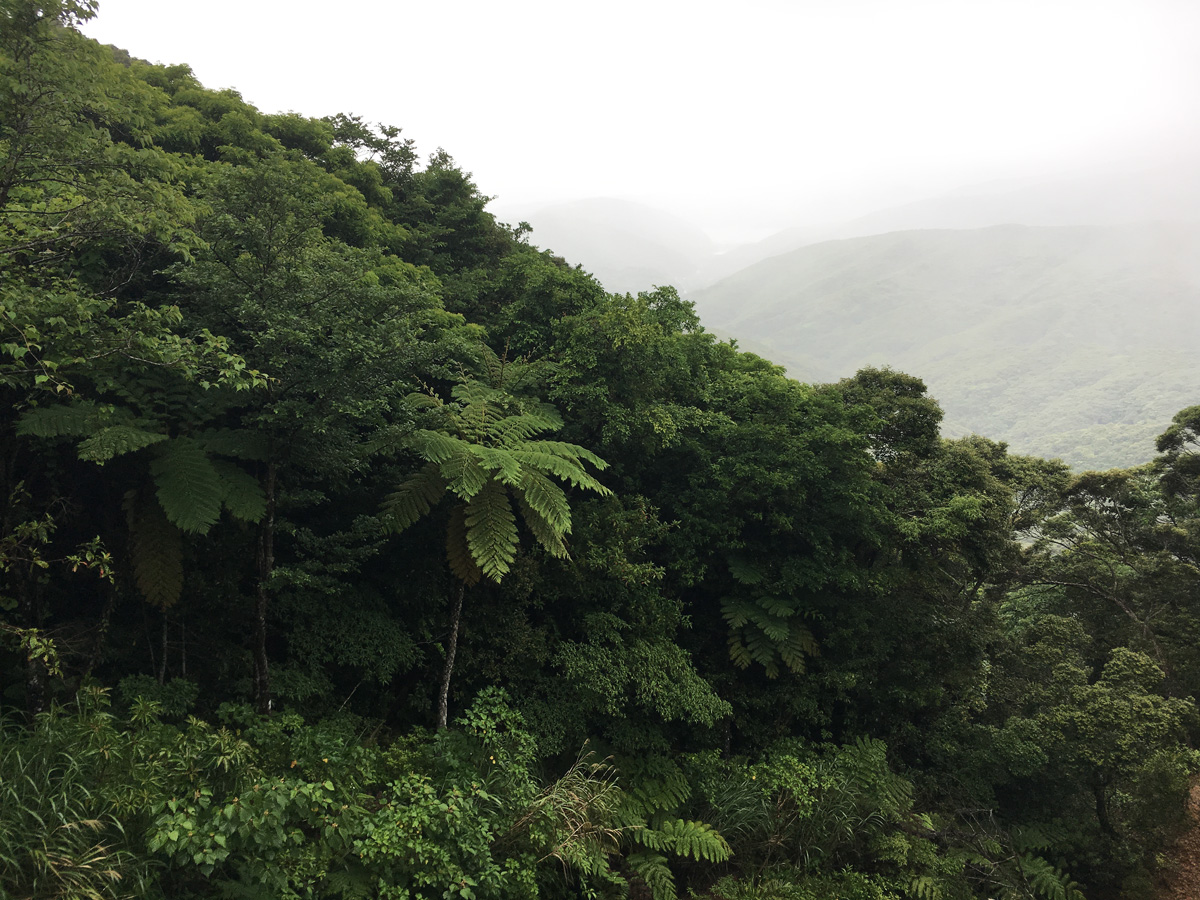
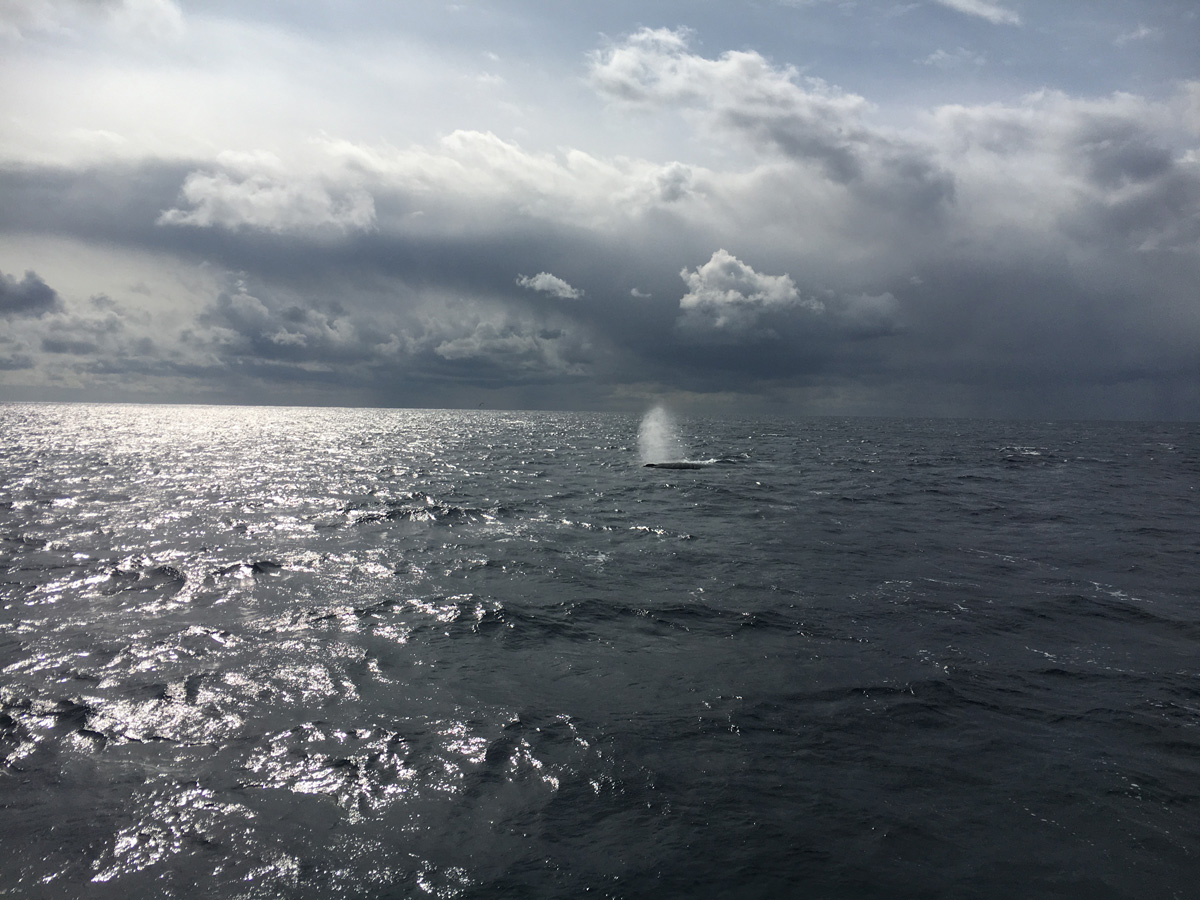
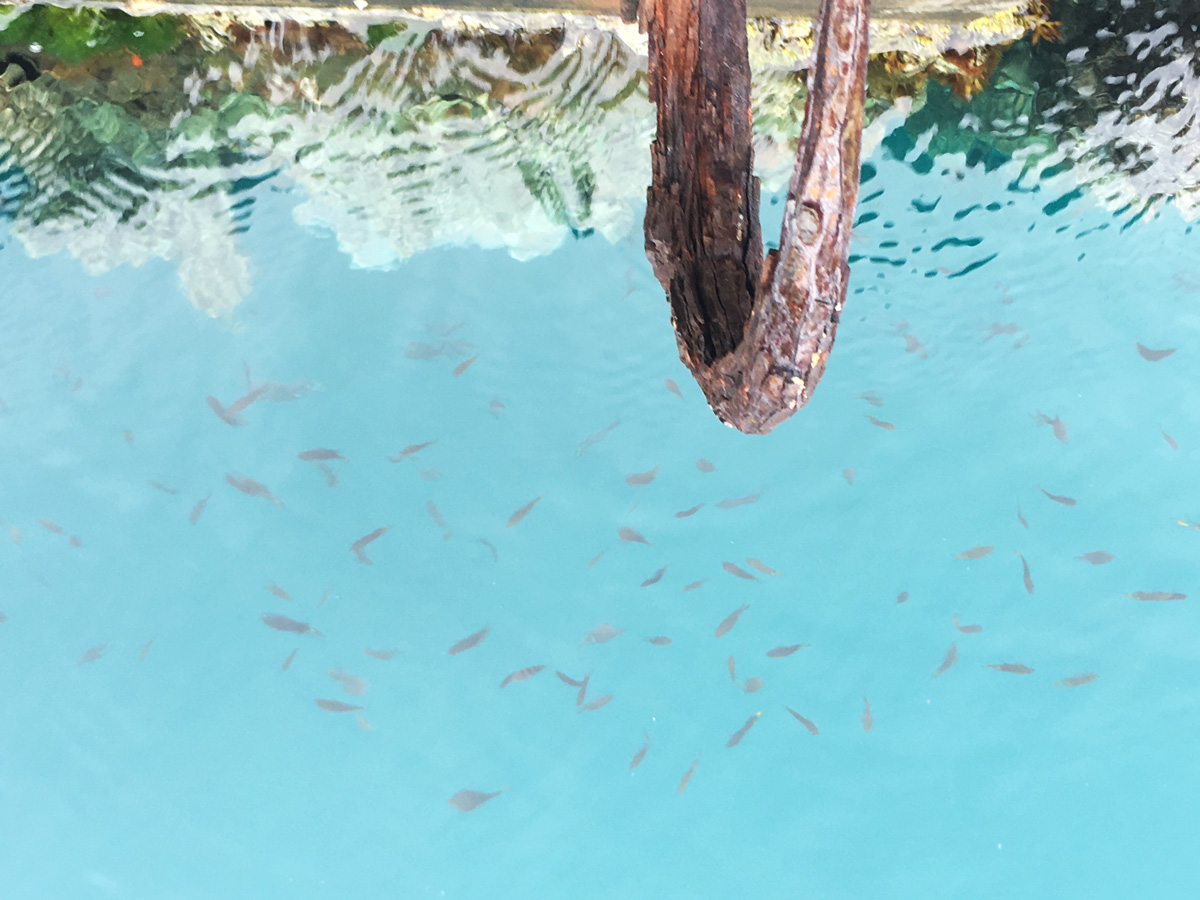
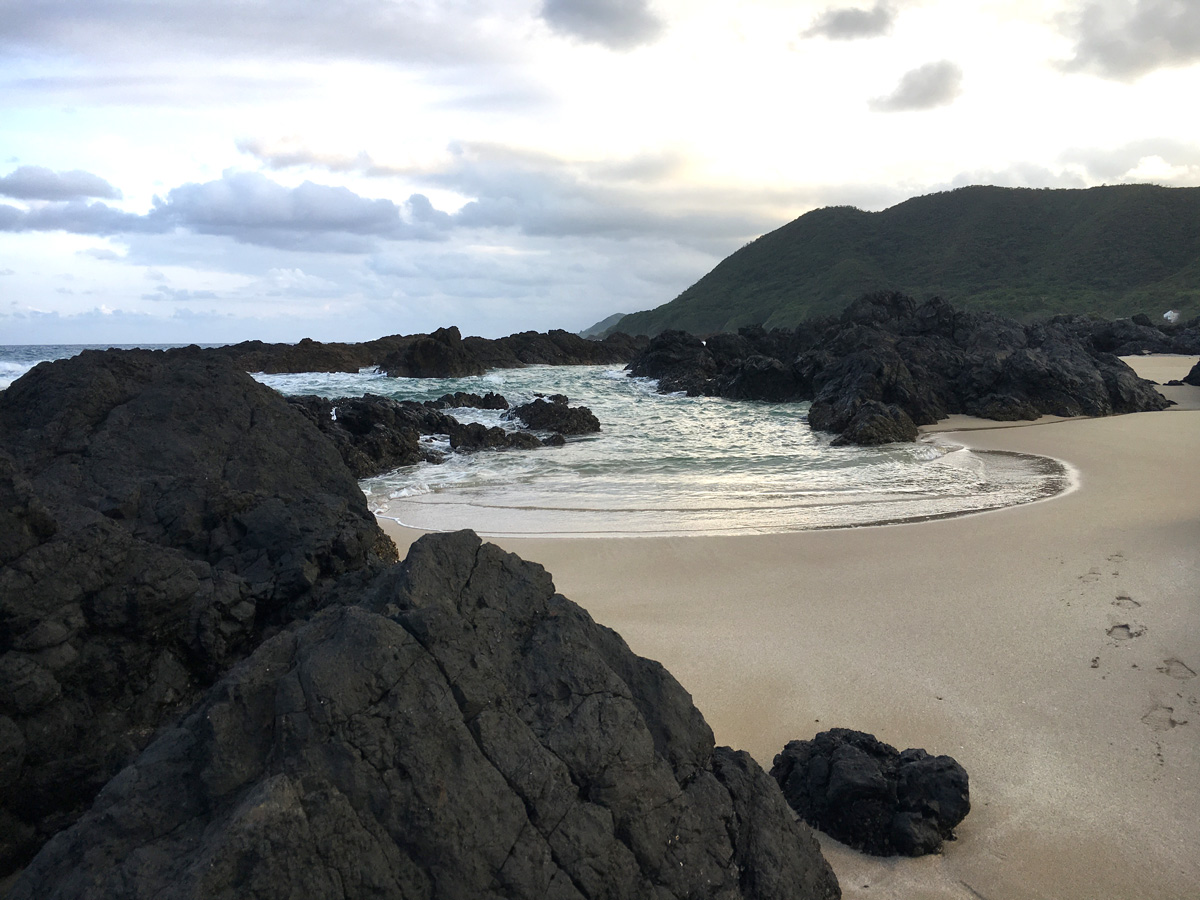
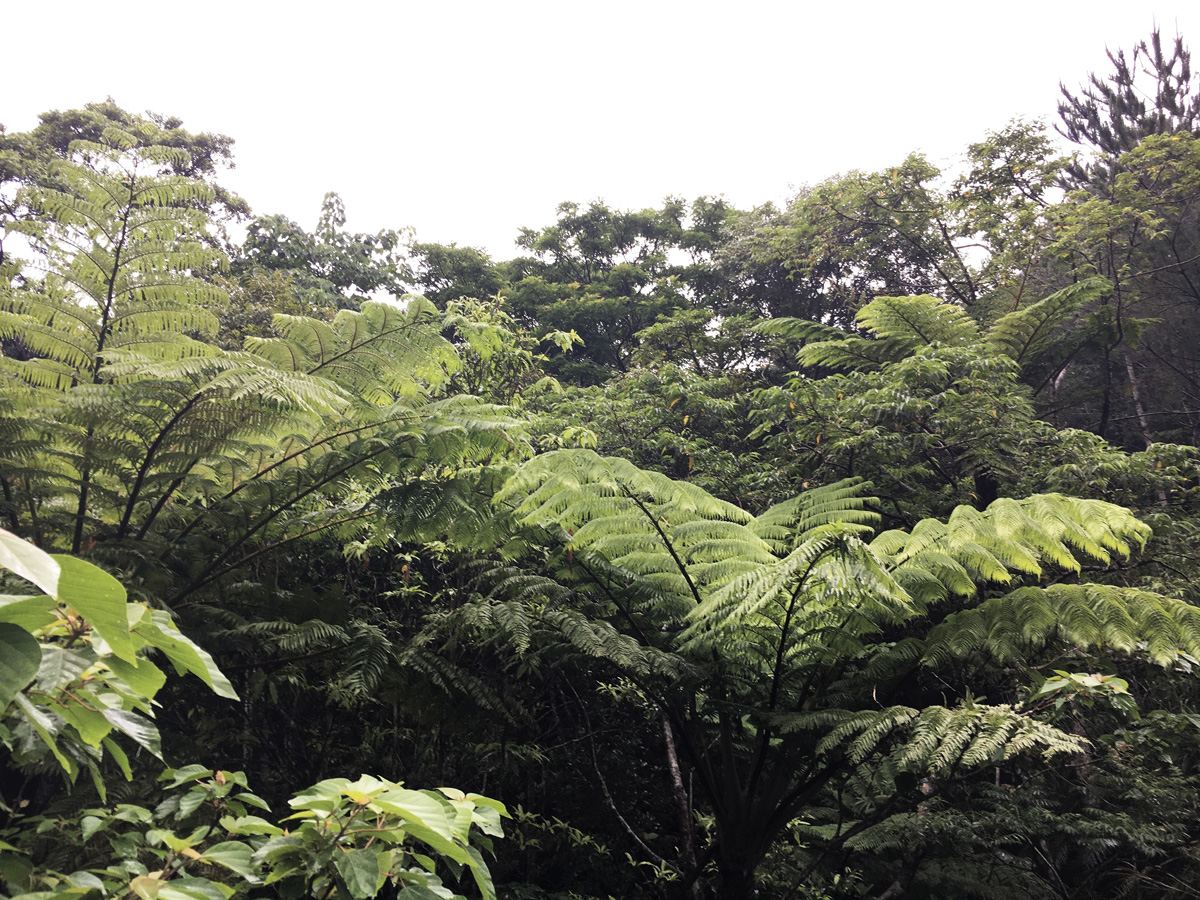
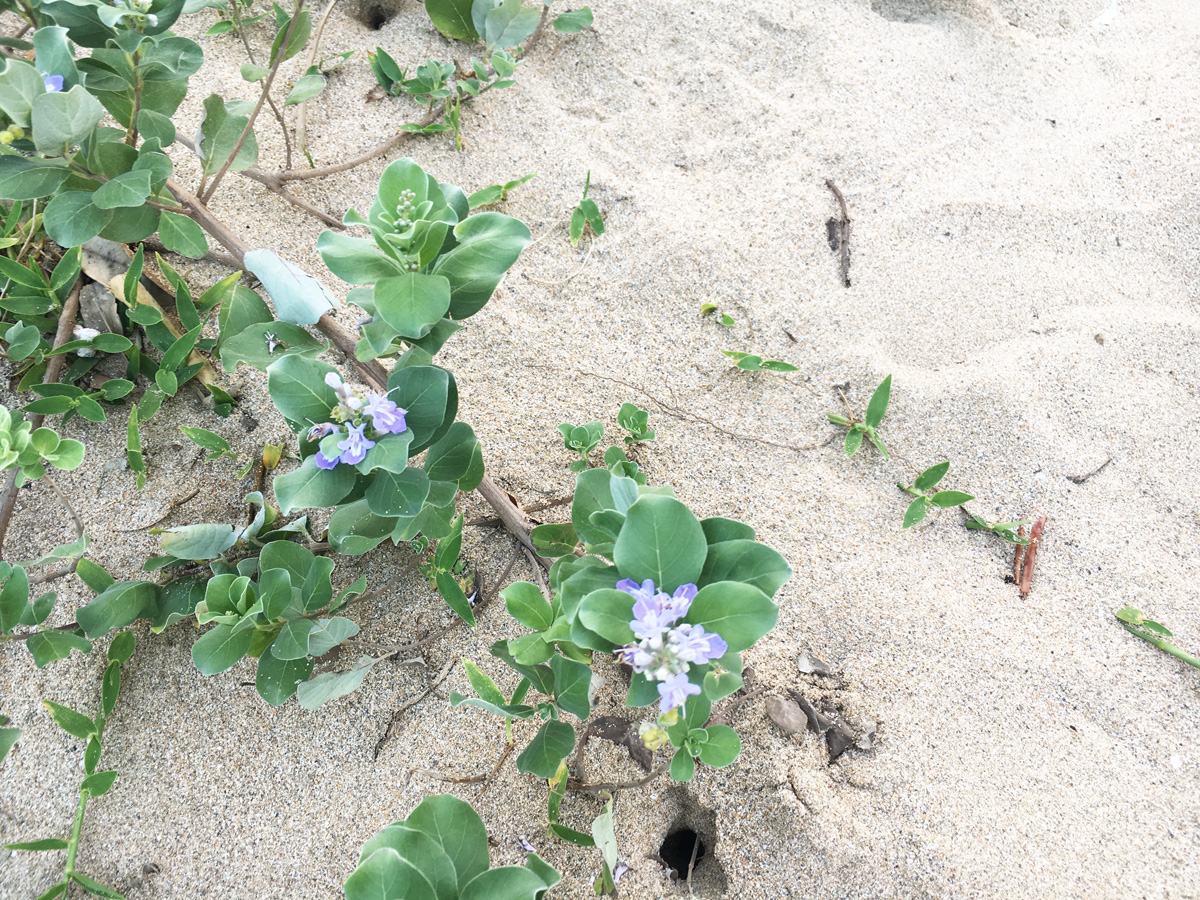
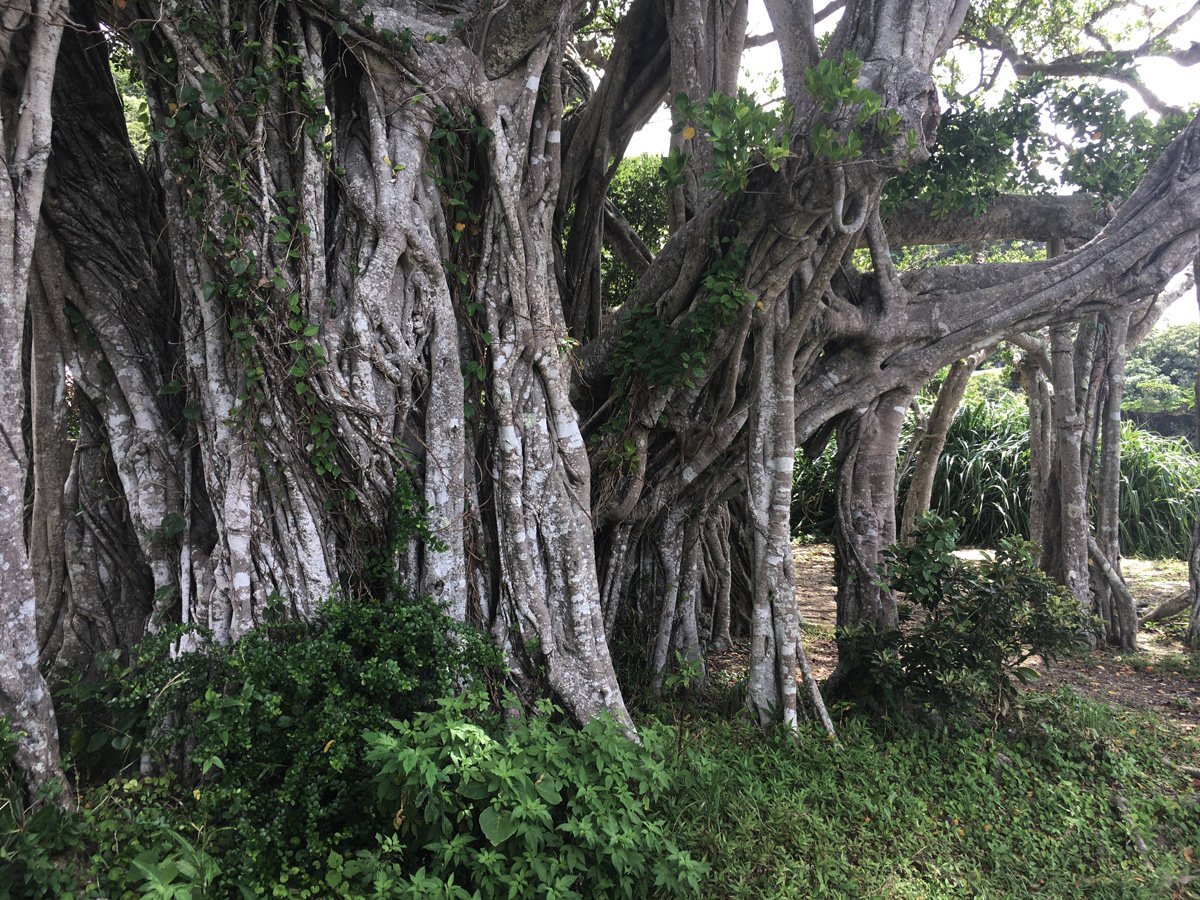
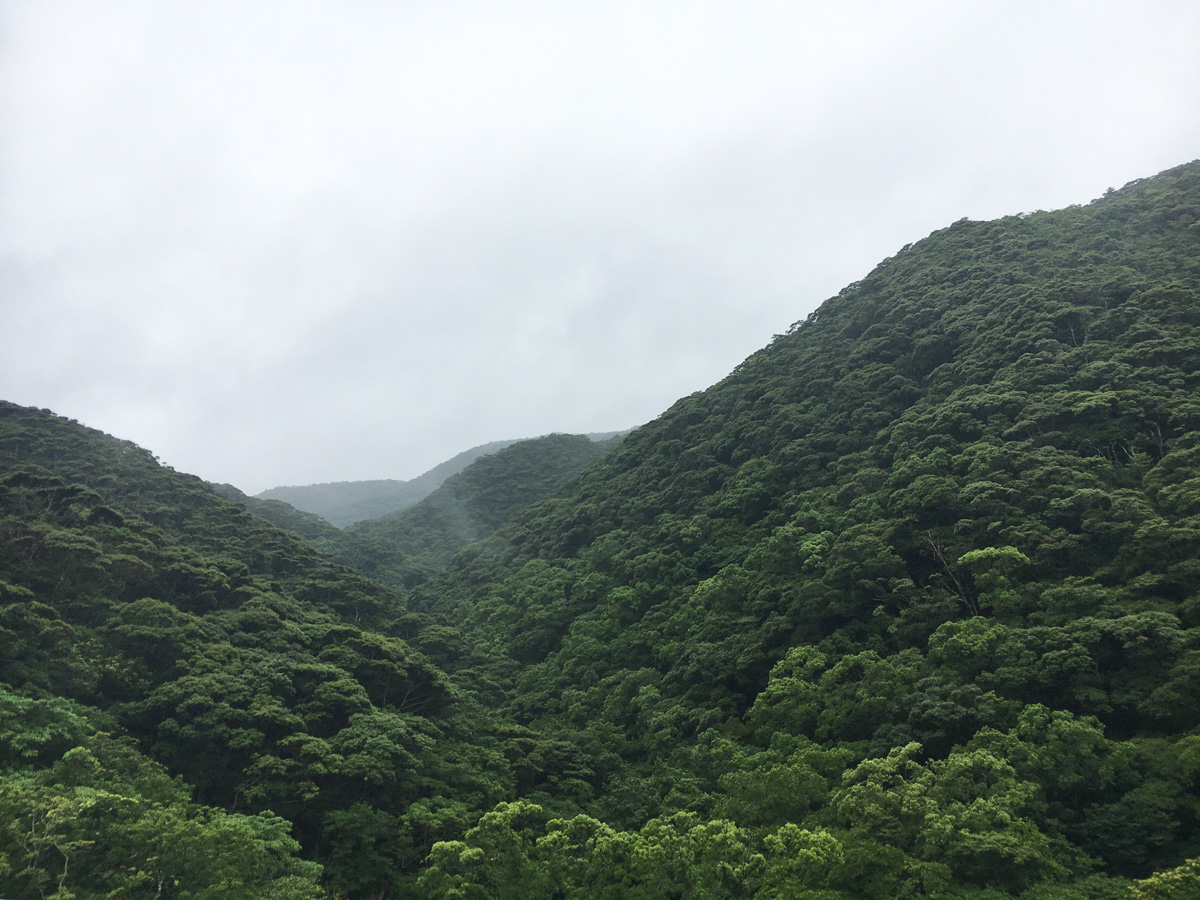
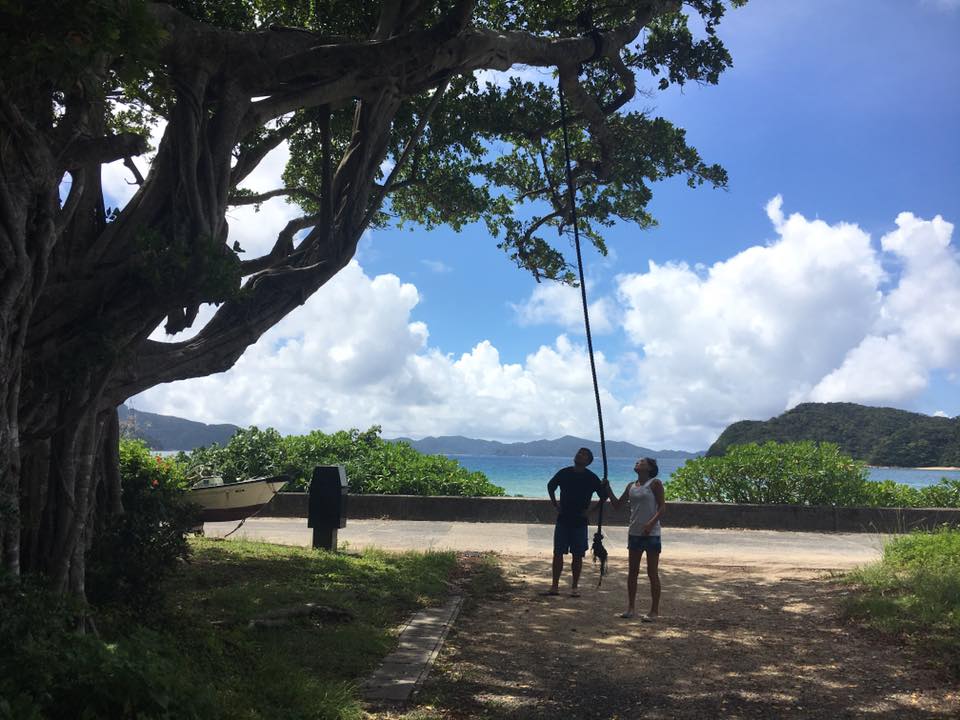
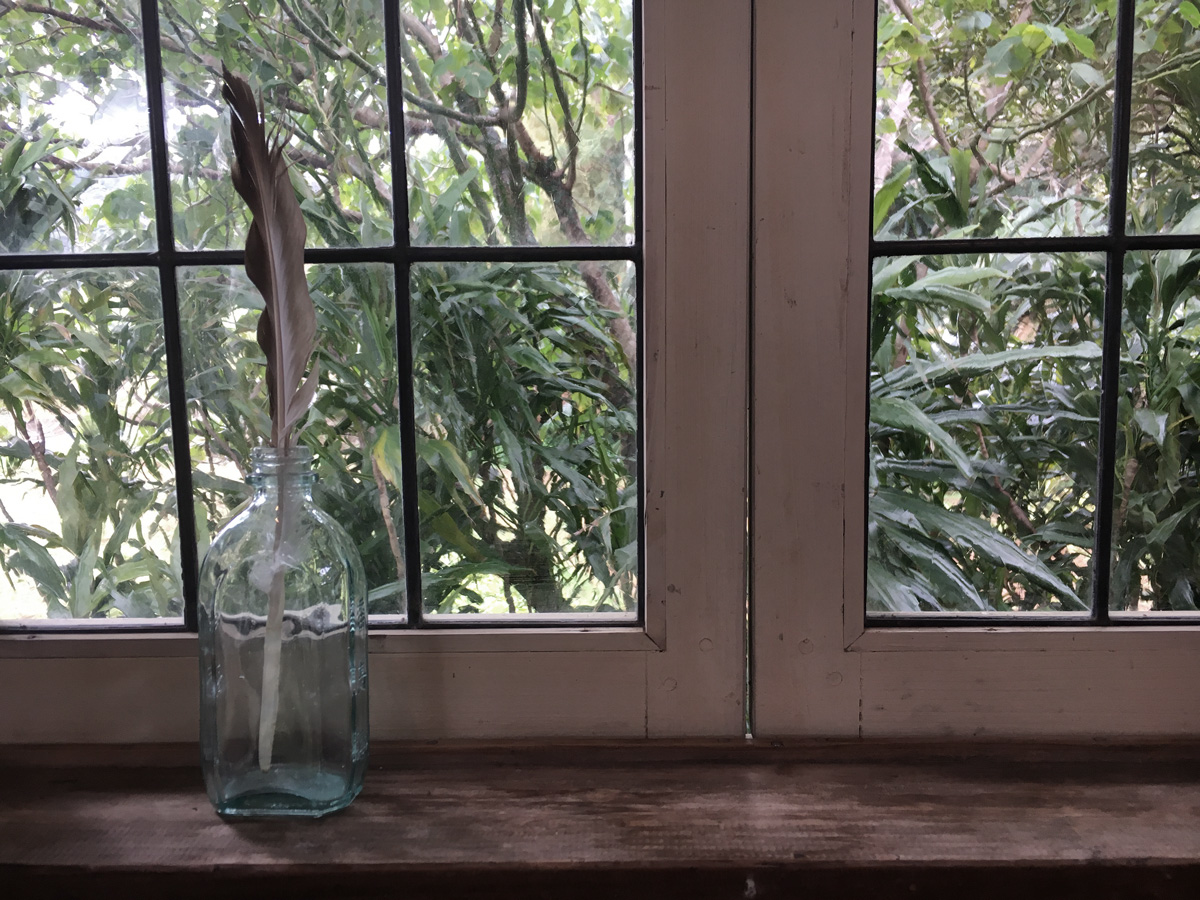
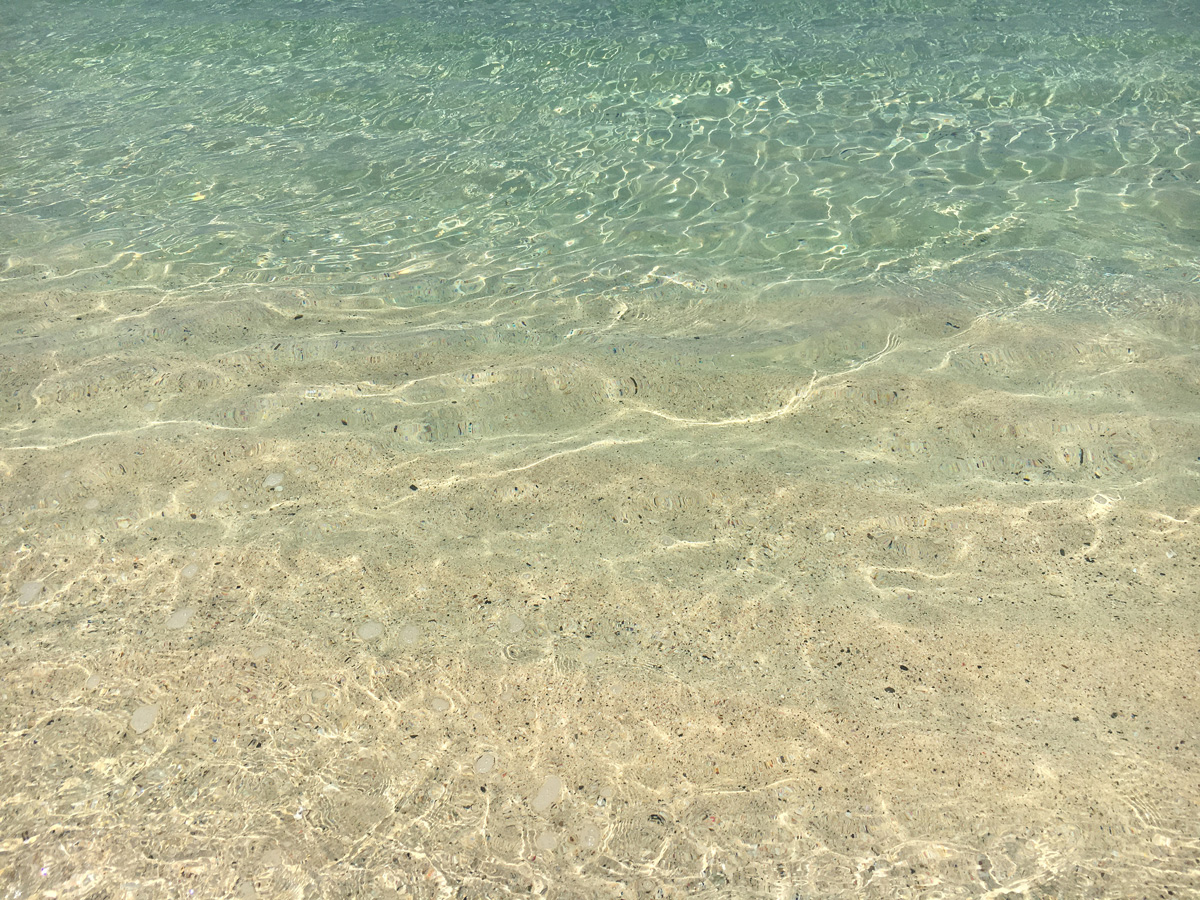
Geography of the island
The main island is composed of 5 wards, Amami-shi, Tatsugo-shi, Yamato-mura, Uken-mura, and Setouchi-cho. There are also the smaller islands, Tachigamijima, a land-tied island, Yuikojima, Sakibarujima, Tobirajima, and Tategami. You can get to the smaller islands by ferry from the main island.
The main island is no different from regional cities on the Japanese mainland, with large city centers where there isn’t anything you need that you can’t buy. Even if you need special items, you can buy them online and have them delivered. And even though Amami Oshima has “shima” (island) in the name, it is not treated as a remote island by courier companies; though our stay was longer than average, we were able to send our luggage beforehand and fly back once we were finished with our work without any hassle. Speaking of hassle-free, there are direct low-cost carrier flights from Narita Airport to Amami Oshima. If you plan in advance, you can have an extremely cheap resort holiday compared to other domestic locations. But be warned that you will need a car to move around the island, and the island climate is extremely changeable. The recent spate of larger typhoons has had its effect on Amami Oshima. From August to October 2018, no doubt many people saw Typhoons 14 to 21 pass through on the news, with consecutive typhoons large enough to require evacuation hitting the islands.
Agriculture is centered around sugar cane and sweet potatoes, as well as tankan, ponkan, Japanese plum, passionfruit, and mangoes. There is a lot of kokuto (black sugar) shochu production thanks to the sugar cane; single distilled, the color is described as “meicho” (transparent). There are several distilleries with their own unique brands, so it might be worth trying them while you are there and finding a distiller that you like
Yamada Shuzo, located in the foothills of the Nagakumo Mountains in Oogachi, Tatsugo-cho, makes shochu using only ingredients produced in-house. When we visited, we were served cracked black sugar and green tea; they told us all about a new line due for shipment in 2019, even going as far as to make their own rice. Their classic “Amami Nagakumo” is the recommended brand of Koto Natsuyagi, a dyeing and weaving artist living in Amami; the entire FOLKHOOD team likes the stuff so much that whenever we stay in Amami, we ask the owner of every restaurant we visit to keep a bottle at ready for us.
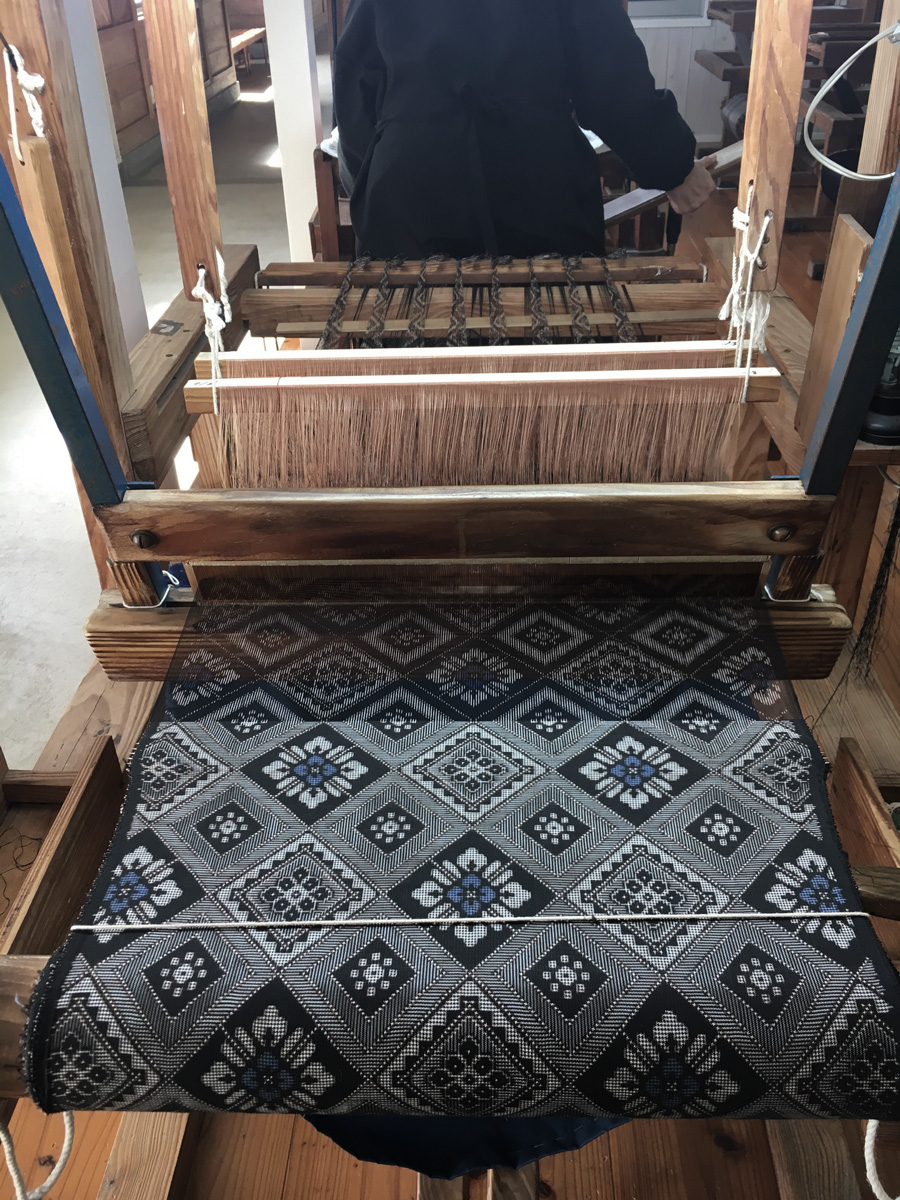
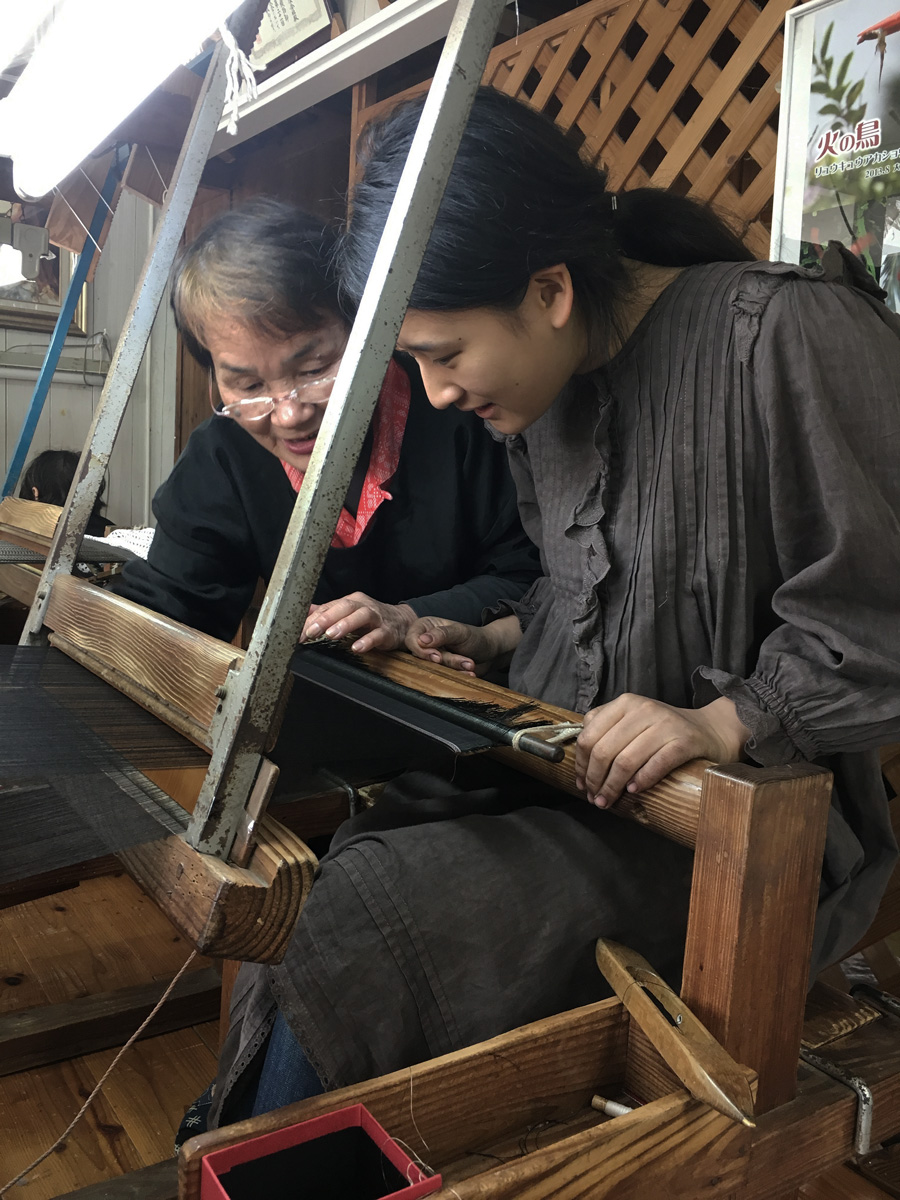
Oshima Tsumugi, a globally unique traditional craft
We visited the workshop of traditional craftsman Akira Higo, where we got to apply traditional dorosome (mud-dyeing) to Lithuanian linen and Latvian woodwork. When you enter the workshop, you notice a lack of artificial sounds. There is the occasional sound of wind and birds, but you’ll only need a quiet voice to be heard; you can even hear exactly what people say when they talk to themselves, and even have conversations with them in muttered tones.
Just the sound that people make when they work is enough to tell you exactly which step they are at. Even when you are outside, and you hear someone open an earthenware pot, you immediately get which step they are about to do next, and what they want to do (with us amateurs in the workshop, the master will come immediately if you are about to do something wrong). Dyeing in the workshop isn’t done amidst chatter and clamor, but involves fervently passing string through a liquid made from sharinbai, and concentrating on dyeing the string evenly by turning it. There are workplaces outside the workshop as well, proceeding from indoors to the mud paddies and river, and you will spend about the same amount of time at each.
The dorosome work we experienced in the climate of Amami Oshima felt like an embodiment of the cycle of life and death.
I was responsible for dyeing the Latvian woodwork. The steps were the same as dyeing string via the Oshima Tsumugi method, but significantly easier. Remember there is a world of difference in how difficult the work is, as big as the difference between making radish in a plant pot and a whole harvest of rice in a paddy. Yet, each step is taken one at a time. The string is polished, buried, then rescued from the mud before being born again; this is repeated over and over again before we finally encounter the distinctive black of dorosome.
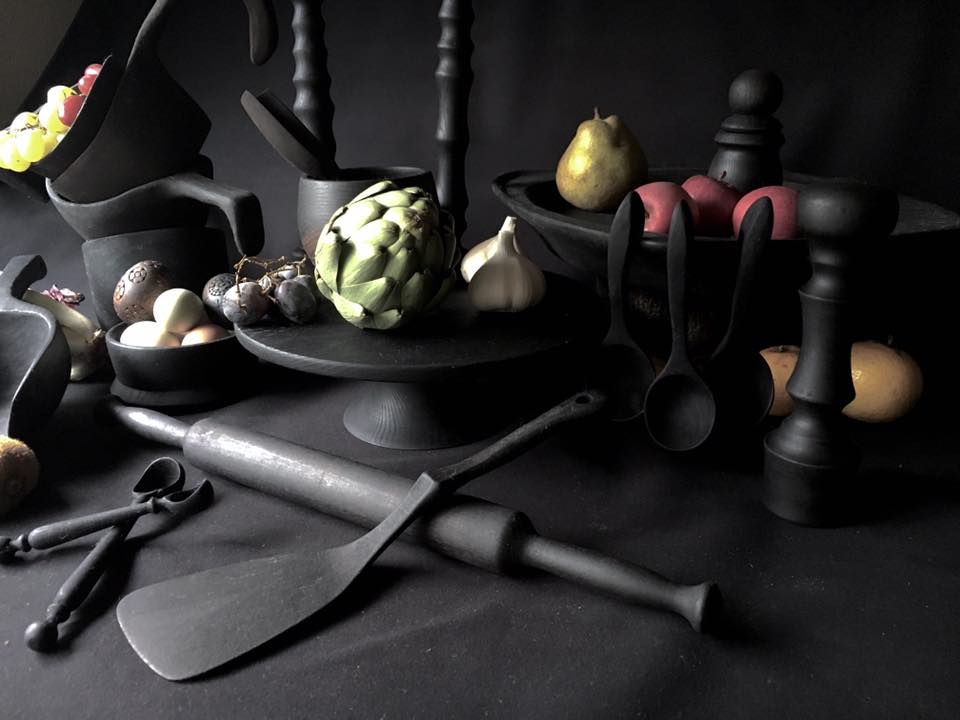



A question crosses my mind: “Just how do we decide what is beautiful in our daily lives? Where, when, and who decides?”
As you see things from the perspective of a creator of craftwork and experience their work, you always come face to face with the question, “are you ready to spend your days doing this work?” Things known as “traditional crafts” in society involve significantly more people than one might imagine; the quality of the work is affected severely by the environment in which they are made. For example, this kind of craftsmanship cannot be born in environments where people cannot live. The techniques are born out of the natural ingredients of a locale where nature and people exist in harmony, where accrued experience has enabled the establishment of a sustainable balance; the knowledge can then be passed forward over generations as a traditional industry.
Behind every beautiful craft is the deep involvement of many different people who never come into the spotlight. There are the people who settled there and farmed the land, creating the right environment for the craft. Next, there are the people who spun the fabric, who dyed it, and passed the knowledge forward, people who spent every day patiently continuing their work without rest, and who dedicated their lives to doing this. It is only after all of this groundwork is done that the finest techniques and individuality can come together into one material to create one product.
Seeing what is involved, it is easy to see why Oshima Tsumugi costs 2 million yen per length, but I would like to know how the value of all this work is communicated to, say, a complete beginner in Ginza.
This time, I learned how strenuous the craft was, even just doing the dorosome part. It so happened that there was a nice lady under the care of the household to which my aunt had married into who had worked as a weaver in an Oshima Tsumugi workshop from when she was a child. In her later years, she had sadly lost most of her vision. As a child, I only thought of Oshima Tsumugi as a textile for men and hadn’t appreciated the beauty and complexity behind its production. Having visited Amami for the first time and seen and heard what was involved, I finally understood why she had lost her sight. Perhaps I said things which were insensitive to her efforts. It was the memory of her, who has now passed away, that came to my mind as I heard the sounds of the weaving machine.
As we face a turning point in the 21st century and ask, “what is value?”, it’s certain that you will find key parts of your answer in Amami Oshima. Whether it is how you think about crafts, agriculture, nature, or even how you use your time, this is a place where you might be able to reset how you live and how you work.
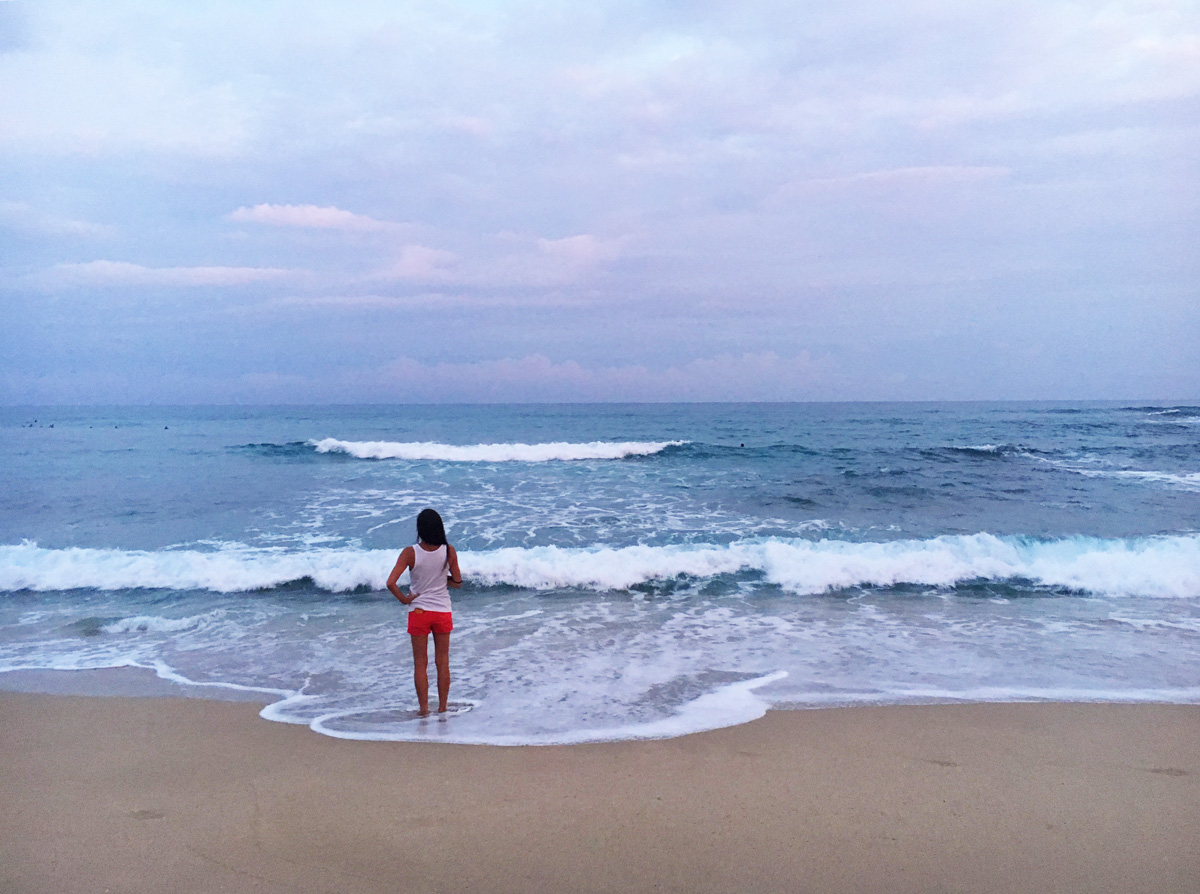
Summer in Amami Oshima makes you sweat, even when you aren’t doing anything. It oozes out from your forehead, temple and neckline, escaping from every pore and running down towards the center of your body, collecting below your heart, both front and back, soaking your shirt and weighing it down before drying off as the sun sets. The youths of the island wash the sweat off amongst the waves. The surfers who congregate on the beach close to sunset exchange information about the waves. “How is it today?” “It’s good.” The conversation is to the point. Here, there are no shrill voices or niceties like in Tokyo or New York. The natural greetings and conversation, void of forced smiles, feels comfortable, but there is a certain shyness towards “strangers”. It’s similar to the Amami Rabbit; there must be something in the spirit and accumulated experience of the island. To get to know the locals, I recommend you spend a night drinking black sugar shochu with them.
It might be something to do with the unrepetitive nature of their work, but it’s rare that lots of people come out at the same time on the same day to the same surfing spot. (In the tourist season, there are apparently lots of surfers from outside the island too.) Everyone seems to come and go at their own pace; there are also lots of people enjoying the waves from higher spots inland. Despite the lack of lifesavers, many of the beaches with good waves will have people watching.
。
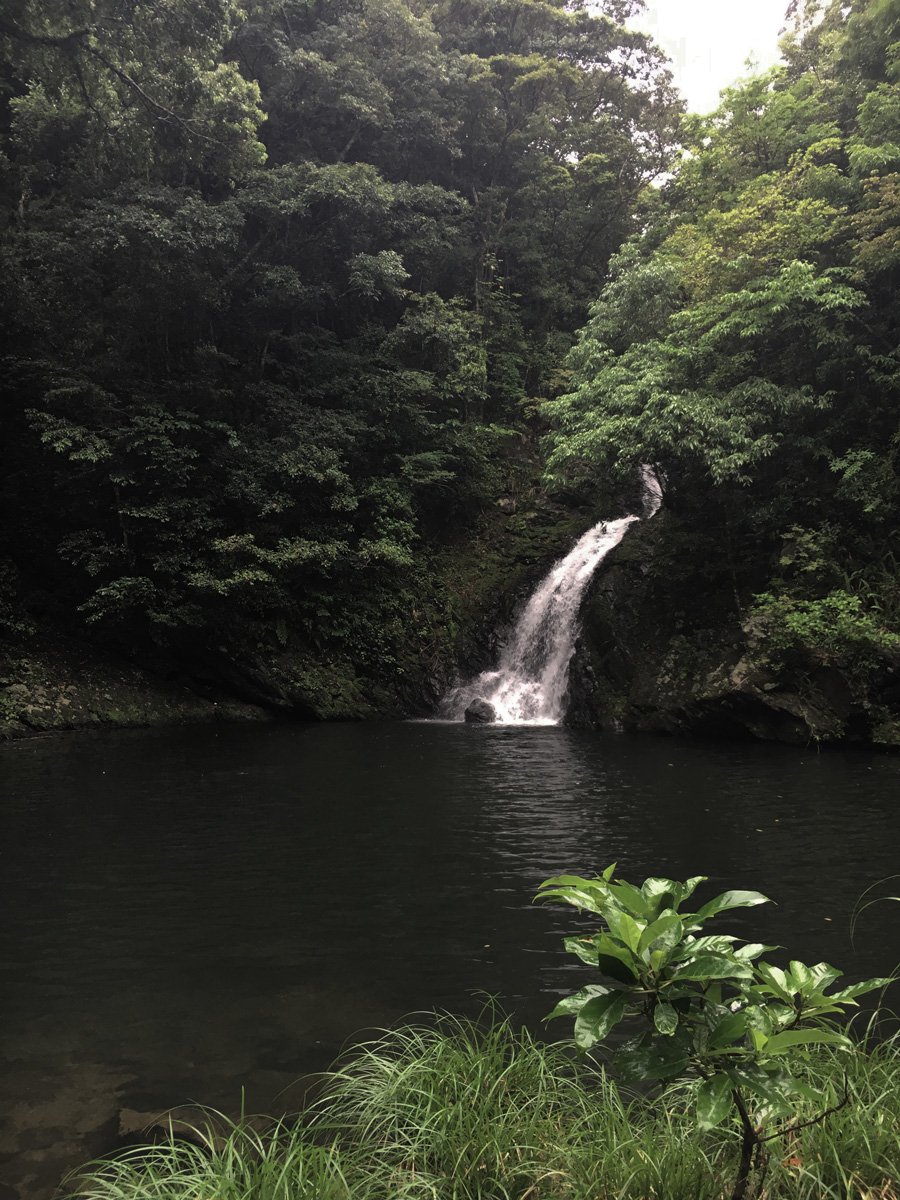

The island is home to the Kinsakubaru Virgin Forest, full of mangroves and Flying Spider-monkey Tree Ferns. You might also see the Amami Rabbit, a Natural Monument, or colorful birds that you’ve never seen before like the Lidth’s Jay or a Great Spotted Woodpecker. Island residents hear the singing of the birds and get a feel for changes in the season. You’ll find animals and nature in daily conversation, comments like “the Ruddy Kingfishers arrived today,” or “I heard a Ruddy Kingfisher for the first time this year. Must be spring.”
Apart from the unique flora and fauna, something that makes the island special is its unique religious background. You’ll occasionally spot a torii (shrine gateway) around the island, but there are nearly no Buddhist temples. In their place, there are many Catholic churches in the north of the island, nothing like the grandiose stone churches of the West, but small, wooden buildings.
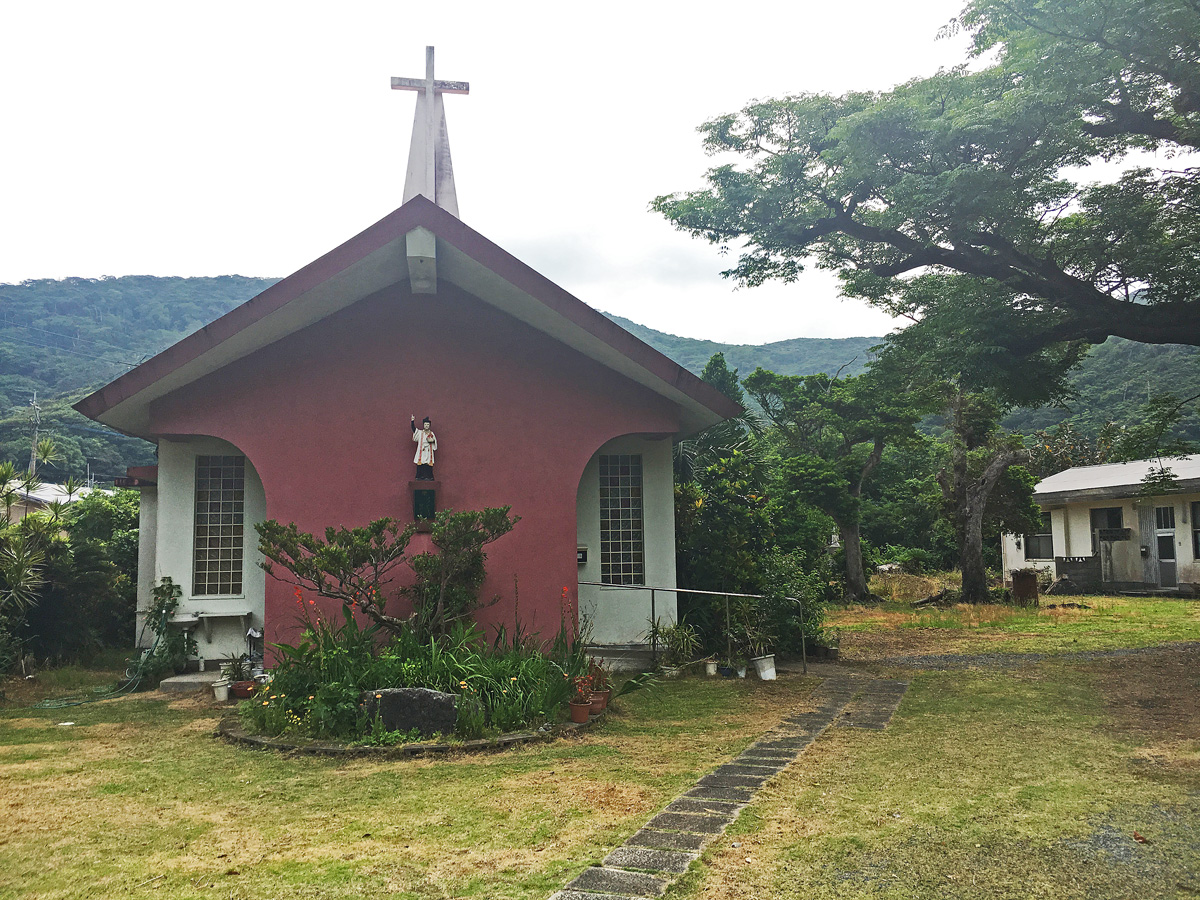
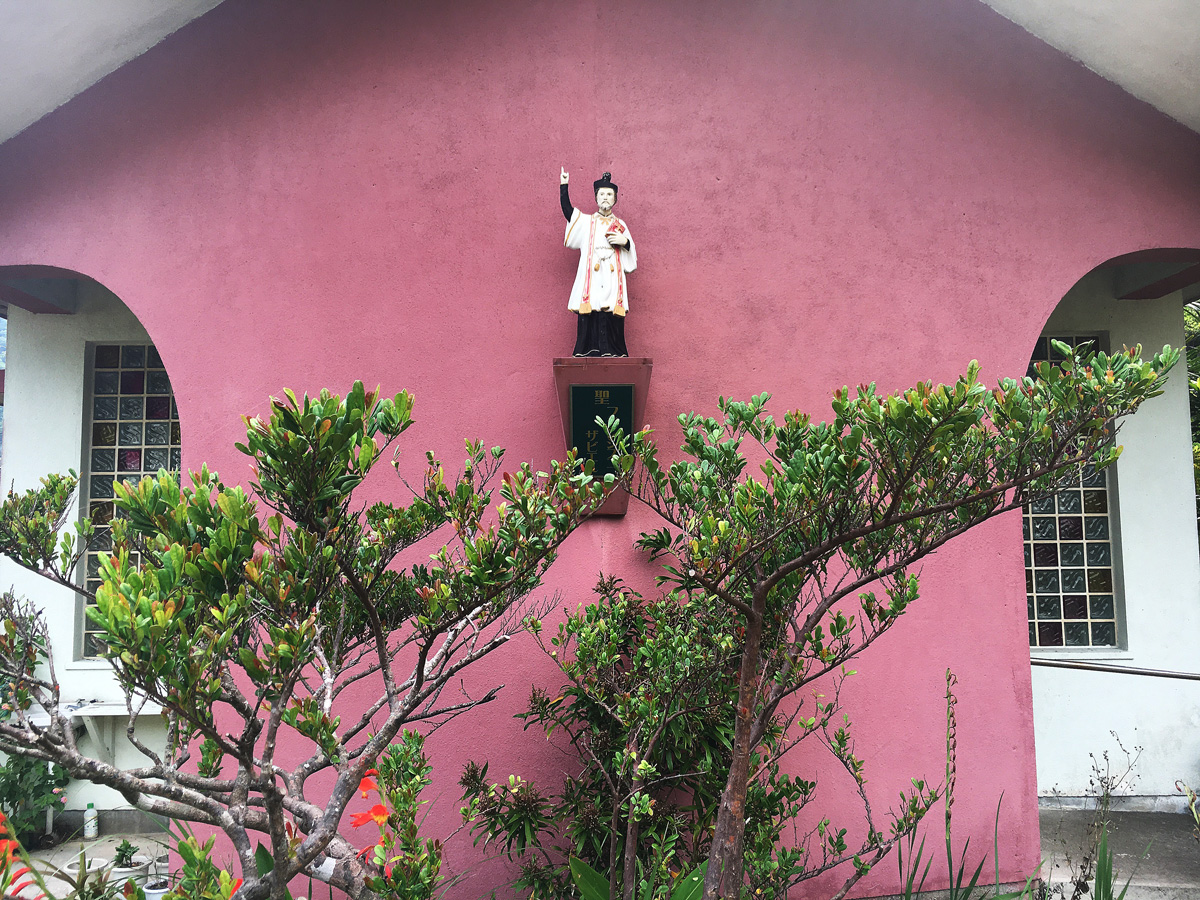
There are no more “noro” who used to be responsible for public ceremonies in Amami, but there are still elements of folk worship like “yuta”, often compared to the kannagi or miko (priests). Through the kind invitation of locals, we also paid our respects, bringing salt, sake, and a donation. A kindly, smiling lady sat in front of a tapestry of Amaterasu Oominokami; when we told her our birthdates, she immediately asked us about our journey. She had seen through our travel-filled lifestyles within a few seconds; we were very impressed.
She told us that our journeys would continue, and that we needn’t worry about our families’ health. She told us that sore throats were a sign of fatigue, and that we should take two days or so to sleep and rest.
One of my friends got told off, “you think your wife doesn’t know you’re cheating, but she does.” Another, “your next big chance at work is coming around October, so look forward to it (this was spot on).” If there’s something on your mind, then you better come prepared. A yuta is not a fortuneteller though; it is her job to protect the community through ceremonies to appease the land. Do refrain from taking her time for a laugh.
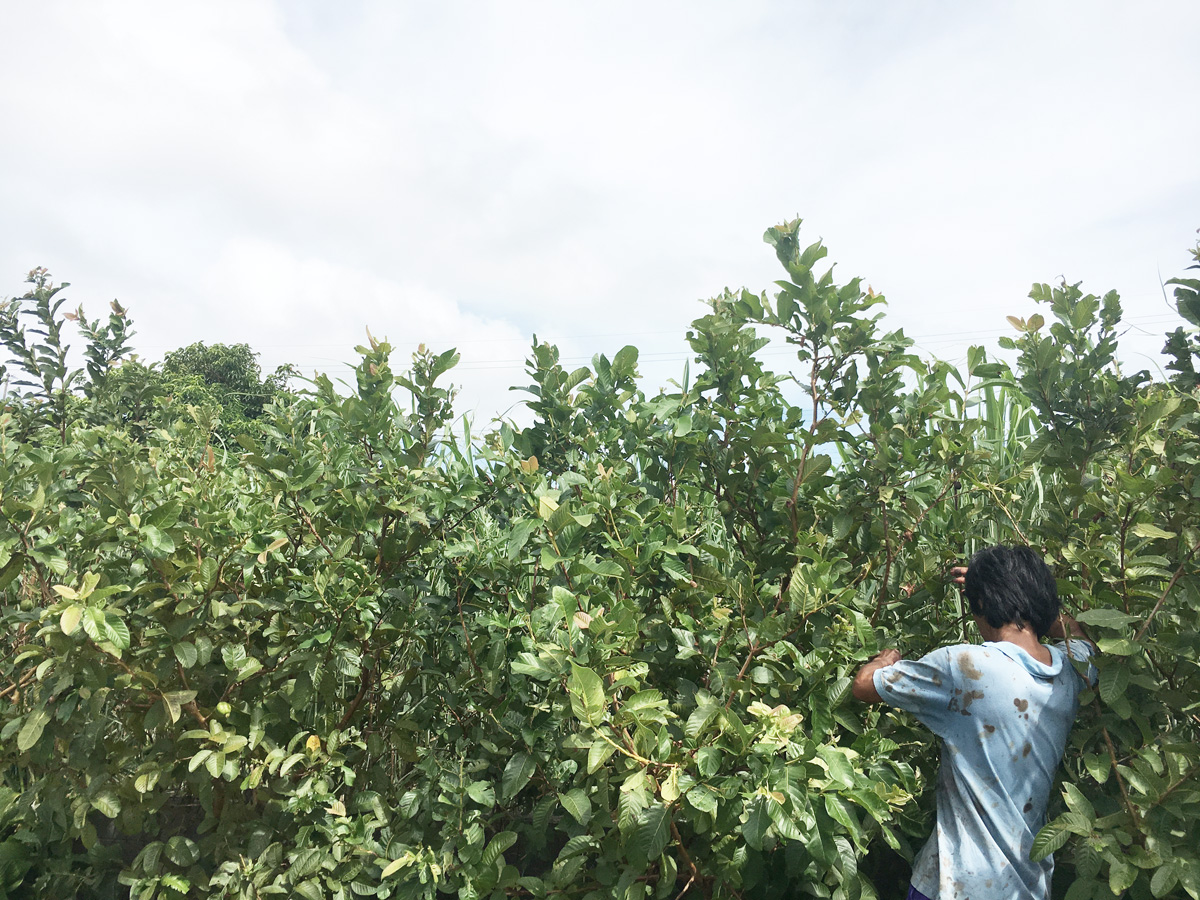
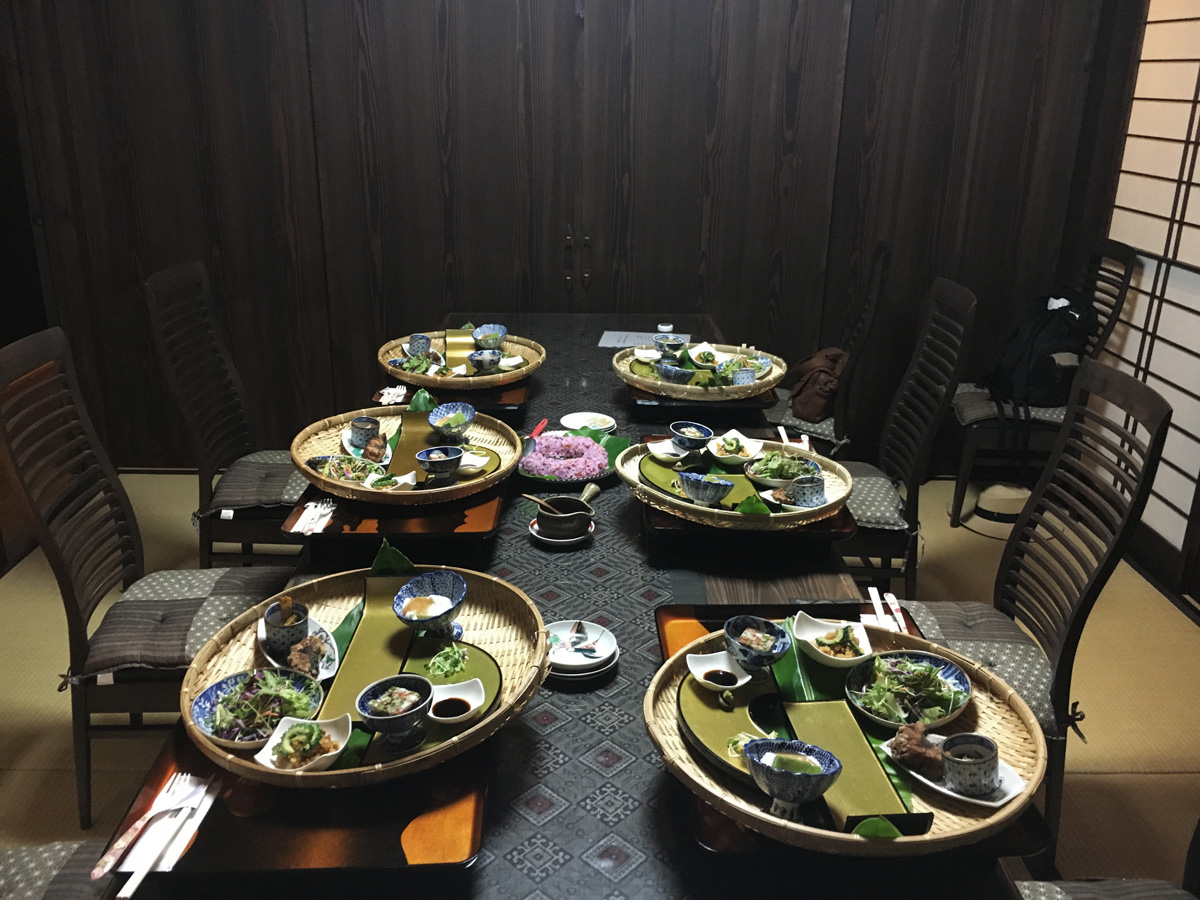
As for traditional cooking, there is plenty of produce from the sea, plus locally produced traditional vegetables and dishes that you will only find here. In the summer, you’ll also find ripe tropical fruit hanging in your garden. When I see them, I tend to get drawn to them and forget about the vipers in the undergrowth.
The island is home to many young arrivals, including artists, orchard keepers, bakers, and small business owners with guest houses and restaurants, etc. You can always find a wide range of cuisines and breads from around the world, so you’ll never feel that distinct loneliness that you find in other regional cities, like you’ve been left out by the world. Maybe it’s the flavor of the big city and the presence of cosmopolitans that have something to do with how your island experience is always fresh and comfortable.
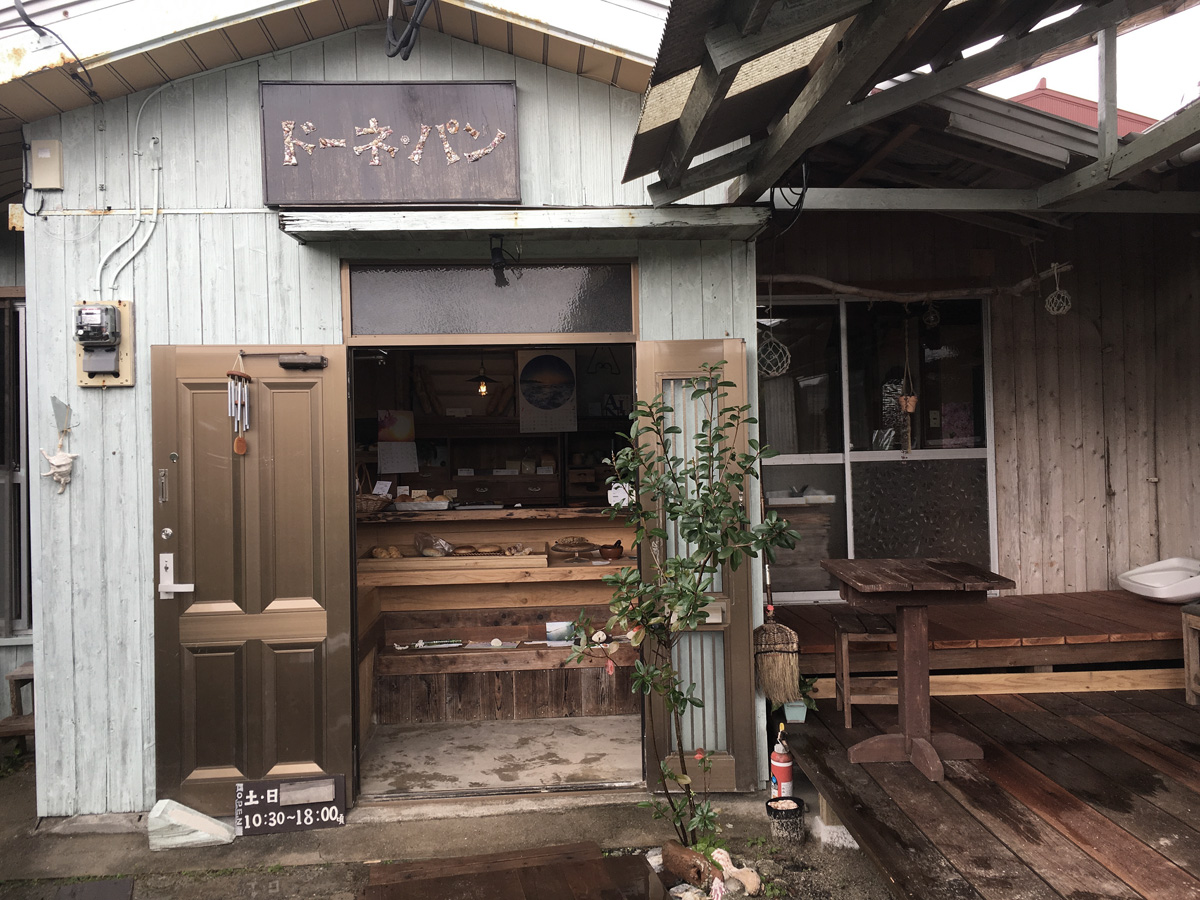
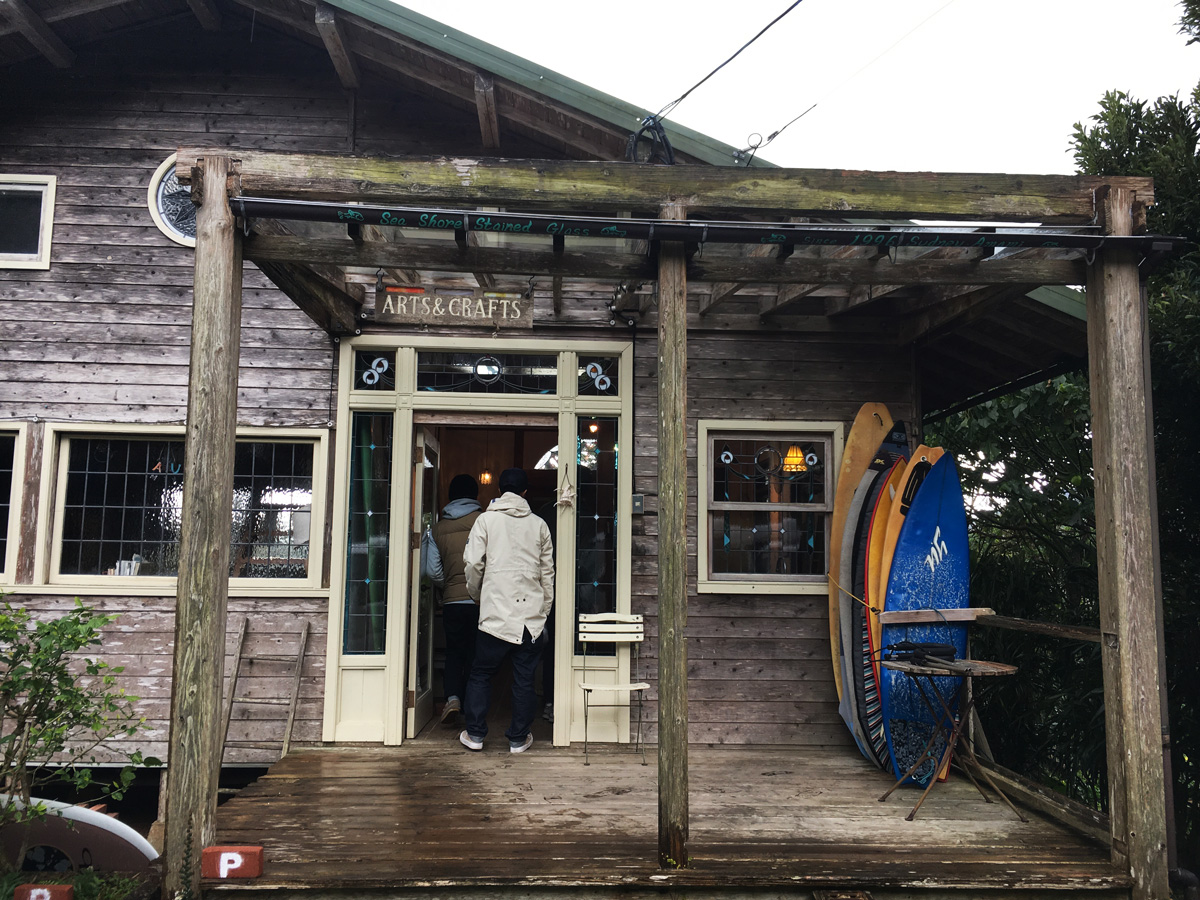
Published here —
Discover Japan誌
Scenes from our work in Amami Oshima were covered over 6 pages in a special in
Discover Japan, December 2018 edition, Vol.86, Special: Crafted masterpieces which connoisseurs love.